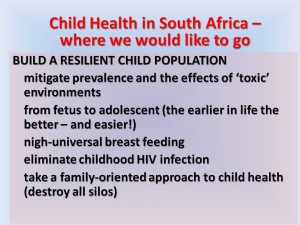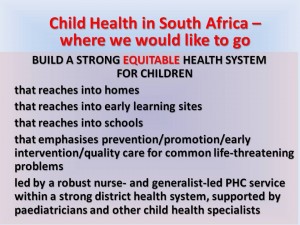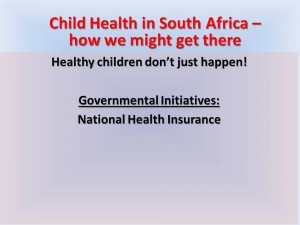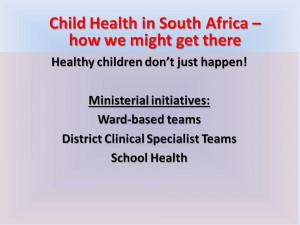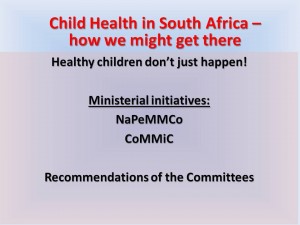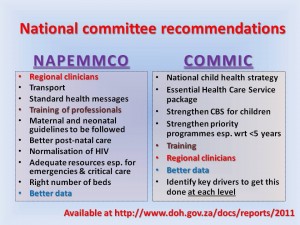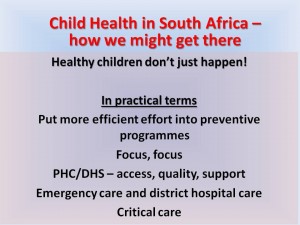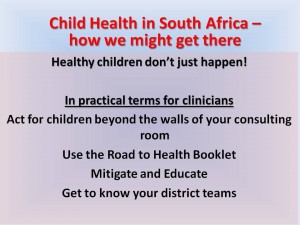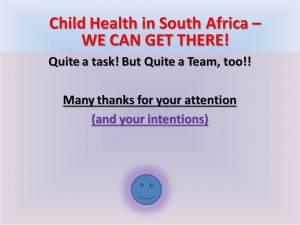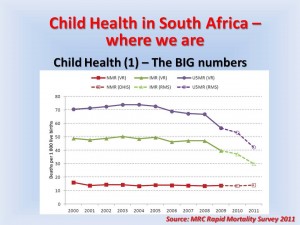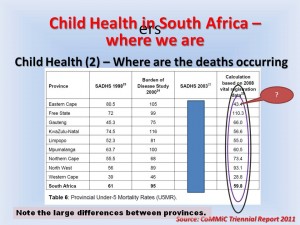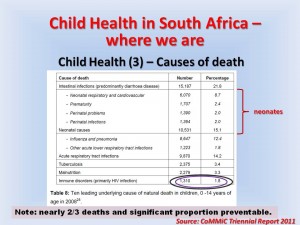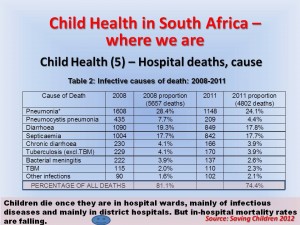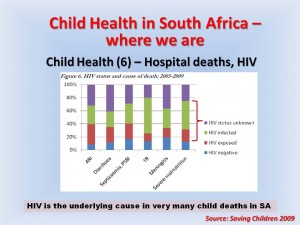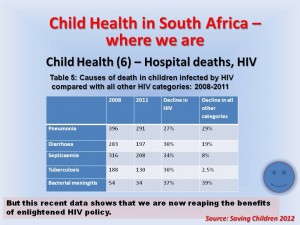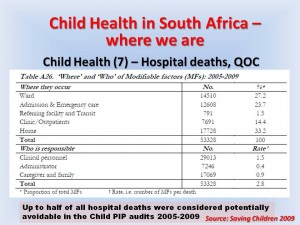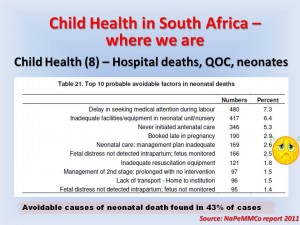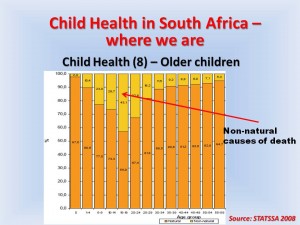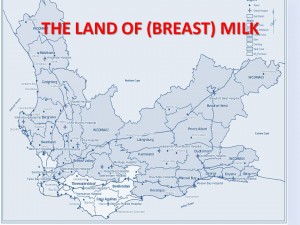I
am dictating this article on Freedom Day 2019. It is 25 years since my
mother-to-be was born, a freedom baby. My due date is May 8th 2019, Election
Day. I am likely to come into the world as you are voting. How are you going to
vote? Will you vote? Will you think of me?
I
won’t have a vote. Nor will about 20 million children in South Africa. I wonder
how much you have thought about us as you think about your vote? Because your
choice plays a part in determining our future, you should, I think.
I
know that it is not so easy to choose how to vote in 2019. I feel my mother’s
stress hormones every time she thinks about it. This is on top of the other stresses
she feels from money and food worries, violence etc.. We depend quite a bit on
government grants and free services to get by. In that way we are not
exceptional: more than 60% of South Africa’s children live in very poor
households. I feel stressed too.
Vote
for me! Vote for us! Not-so-easy, you say. I agree. Let’s think about it.
Not
to vote is a cop out: a negative statement of the heart, not a thoughtful action.
It won’t help me to grow up in a better environment than my mother did. Don’t
abandon hope.
Spoil
your vote? Perhaps in a local election as a protest where all the candidates
are disasters, but to do it in the national election would be the equivalent of
not voting.
Tactical
or specific vote? I see these as equivalent (just because I am small, don’t
assume that I cannot think). So the next question is ‘heart or head?’. I think
you know how I think – it’s heads every time. An emotional vote will increase
the chances that either the extremists or the old guard will increase their
power – to be avoided! An emotion-led vote is also more likely to be a selfish
use of your vote: ‘me and mine’ before ‘country and community’. Even if you are
emotional about the difficult lives that so many of South Africa’s children
live, you need to turn that into a thoughtful voting response. No cross crosses
on Election Day, please!
So let’s think together. How much is your vote for you, and
how much is it for others? As a future citizen of South Africa, I urge you to
consider the future of all children
in South Africa above yourself – and not only your own children, if you are in
the minority of well-off South Africans. The median income of South African
households is about R1 200 per person per month. Are you in the 50% of people who
are below or above this line? Most children are below this line. Look across
the line and think.
What
would a vote with children (the voteless) in mind look like? It would be one
that would increase the likelihood that our best interests would be served. That
from conception through infancy, childhood, adolescence and adulthood our physical
and emotional development, our resilience, our education, our health and our
opportunities (including the disabled among us) would be given the best chances.
So very many of us are losing out on these things in 2019. Vote for change.
Even, change your vote!
So
what would need to change? We need a much less unequal society. There are
millions of have-nots who have almost nothing, like my mother. For almost all
of us, this is not our fault. Not to vote with this in mind is to recklessly wreck
millions of children’s futures – and wreck the country as this situation is a
breeding ground for dangerous demagogues and communal violence.
Apart
from being an effect of our history, 25 years of crazy levels of inequality (a
lot of it led by unemployment) relate to greed and its first cousin, selfishness.
Too many ‘haves’ have and hold. Economic growth, even if we had it would not be
enough to overcome gross inequality on its own. More must be shared. I don’t
think that most ‘haves’ see their having as greed. If you don’t believe that it
is, ask the planet (but more of that later). Let’s call it ‘unintended
selfishness’, being generous but firm.
Greed
also results in persistent inequality via corruption: those who steal and cheat
and those who encourage them to do so and benefit thereby. The huge economic
toll of grand graft leaves insufficient resources for our many pro-poor policies,
including those that could increase youth employment.
That
brings me to poor governance. What is the use of progressive laws and policies
if, through corruption, weakness and incompetence, their fruits are never
tasted? Economic growth, employment prospects and greater equity are strangled
at birth. My birth! You might as well
strangle me.
(I
continue to dictate from the safety of the womb.)
What
else needs to change? Almost every aspect of the environment I am to be born
into! Pervasive violence and abuse. Only policing it better (I hear a lot about
this in election discussions from inside here) will not get at the root causes.
Inequality and broken communities need fixing. Who is talking about community
mental health interventions? They are not in any party manifesto. It is the
same for drugs (including alcohol and nicotine) in my future environment. My
mother doesn’t drink or smoke. She doesn’t let anyone who smokes get near me.
Thank you, mama! And here we find greed again – tobacco companies and drug
barons, for example.
Passing
over air pollution, plastic waste and chemical toxins (I wish I could – they
are everywhere), I move to a change that will blight my life if it itself is
not changed – climate change. My future and that of South Africa’s children is
bleak indeed if you don’t vote for change, and change yourself. I’m talking to
you ‘haves’ mainly: what you have is unaffordable.
So
inequality, unemployment, greed and selfishness, poor governance, our
environments and climate change. All needing change if children are to thrive
in South Africa. Where will you put your cross?
In
choosing a party or a person (even if you vote for another to get what you want
i.e. tactical voting), what do I suggest that you look for?
Honest
and people-centred leadership (no demagogues in there – that narrows the field!),
track record and the spirit of the party or personal manifesto. The manifesto-writing
can be clichéd, derivative and trite (unlike my dictation, I hope), but there
may be vital positives and negative pointers in them, so have a look –
sometimes between the lines. All three of these are unlikely to be found in any
one party or candidate, so weigh up the pros and cons of these three essential
considerations for your vote.
Mr
Smiley’s party manifesto says many things that are good for children and has
done many good things for us while in government. They have signally failed on
the good governance front in recent times allowing grand theft from the young
and our futures, as well as huge slippage through incompetence and greed at
municipal level. And Basic Education? Do you think Mr Smiley’s team can change
tack and call its troops to order?
One
party took the EFFrontery of poverty and inequality and turned it into a form
of politics whose radical EFFrontery would have us join Zimbabwe with an
economy unable to get off its knees, if their manifesto and shouting is their
true intention as a party in government. They say they will give me and all
children a tablet to use when I go to school, and many things like that. Mama
is thinking of voting for them. Think, mama. Vote for me!
What
about the da DA? I like their children-specific claims and aims – first
thousand days, early childhood development, education (also found in Mr
Smiley’s manifesto) – but I really hesitate at their reactionary health
policies. Not child-friendly. Nice
energy and climate friendly policies, Mr M. But I worry about your big business
links. Is tackling inequality really in your sights. Will your partners (predominantly
‘haves who want to hold’) give you the leeway to improve living wage
employment? Better marks for governance (but blotted your copybook with your
silly wranglings in the Cape). I might suggest that people give you a thought
for local government and be tactical for national.
I
can’t give space to all regional, sectional, personality-driven and weirdo
parties. (It is nearly time for my sleep). Avoid the religious ones. Mainly use
these smaller parties for tactical votes, unless the candidate is a great soul.
If you want a flutter and really care about climate change and children and you
live in the Western Cape (where they are on the list), you might give the Green
Party a nod. Their policies are even more radical than the EFF’s – radicalism
is required in this arena. Your votes are meaningless if, by 2030, we all are
headed for environmental catastrophe anyway. You can ‘vote for me’ by being decisively
green whoever you vote for. Out with coal before I turn 11! Nice to see this sentiment
in other manifestos – carbon-free is becoming mainstream in thought. Now for
action, those who win on Election Day!
So,
please vote on my birthday. A thinking vote. A vote for my future and the
future of all South Africa’s 20 million children.
Thanks
for reading my manifesto from the womb.
Vote
for me! Thank you!
See
you soon.
Thembile


